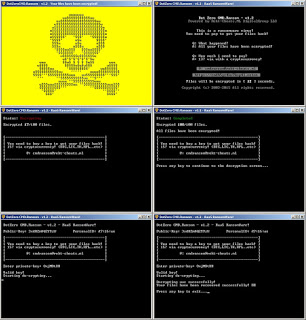The DotZeroCMD virus is a newly discovered RaaS which can be launched by different hackers and criminal groups. Right now there is a worldwide ongoing attack. Read our article for more information about it.

Threat Summary
| Name | DotZeroCMD |
| Type | Ransomware, Cryptovirus |
| Short Description | The ransomware encrypts sensitive information on your computer system and demands a ransom to be paid to allegedly recover them. |
| Symptoms | The ransomware will encrypt your files with a strong encryption algorithm. |
| Distribution Method | Spam Emails, Email Attachments |
| Detection Tool |
See If Your System Has Been Affected by malware
Download
Malware Removal Tool
|
User Experience | Join Our Forum to Discuss DotZeroCMD. |
| Data Recovery Tool | Windows Data Recovery by Stellar Phoenix Notice! This product scans your drive sectors to recover lost files and it may not recover 100% of the encrypted files, but only few of them, depending on the situation and whether or not you have reformatted your drive. |

DotZeroCMD Virus – Distribution Ways
The DotZeroCMD virus is being distributed by an unknown hacker individual or a criminal collective against computer users worldwide. According to the released reports it is set primarily against English-speaking users even though it is distributed all across the globe. Unlike most other threats it appears to be made specifically for 64-bit versions of Microsoft Windows.
It uses the same delivery tactics as other malware. One of the main virus infection methods is to send out spam email messages that contain social engineering tricks. The criminals behind the DotZeroCMD virus coerce the targets into interacting with the malware element. They may opt to send out the files directly as file attachments or hyperlinks that are placed in the body contents. The usual way is to hijack well known Internet services and their contents. The messages are modeled after the sites themselves which is a common blackmail tactic.
In connection with the email messages the hackers behind the DotZeroCMD virus may use payload delivery attacks. Two popular approaches are the following:
- Documents — The DotZeroCMD code can be embedded in files of different types: rich text documents ,spreadseheets or presentations. When they are opened by the victims a notification prompt will be spawned that asks them to enable the built-in scripts (macros). This triggers the virus infection.
- Bundle Installers — The DotZeroCMD virus can be integrated in software installers that are usually hijacked copies of famous applications. The hackers usually target well-known applications such as creative suites, system utilities and computer games. They are spread both using emails and hacker-controlled sites.
In addition the malware files associated with the DotZeroCMD can be distributed using malware sites. They may use the design template of famous sites in order to manipulate the users into thinking that they are downloadinf files from a safe location.
The other method would be to use browser hijackers. They represent malware plugins that are made compatible with the most popular apps: Mozilla Firefox, Google Chrome, Safari, Internet Explorer, Opera and Microsoft Edge. Once they are installed onto the victim systems the dangerous component triggers changes in the relevant applications by redirecting the users to a hacker-controlled page. The modified values are the default home page, new tabs page and search engine. The next step is to deploy the malware code onto the victims.

DotZeroCMD Virus – In-Depth Analysis
The security reports show that the DotZeroCMD virus does not belong to any one of the famous malware families. At the same time there is no information on the individual or criminal collective behind it. The main malware engine can be updated with different instructions depending on the current attack campaign.
It is a complex RaaS (ransomware as a service) which means that its code can be made available to a lot of hackers. Depending on the exact criminal campaign it can start different modules. One of the first ones launched after the virus infection has been initiated is the information gathering one. It can harvest sensitive data that is categorized into two main types:
- Anonymous Metrics — They represent data that is used primarily to judge how effective the campaign is. It is composed of data about the hardware components and certain operating system values.
- Private Data — The harvested information is composed of strings that can directly identify the victims. This includes their name, phone number, interests, location, preferences, passwords and account credentials.
If the malware engine includes a stealth protection module it can be used to identify applications and services that can interfere with DotZeroCMD’s execution. This includes anti-virus software, debug environments or virtual machine hosts. When such are found their real-time engines can be bypassed or the relevant software can be entirely removed. In certain cases if the virus is not able to do this then it can remove itself to avoid detection.
Other malware activity can include system changes. For instance the DotZeroCMD virus can modify entries in the Windows Registry. If the virus modifies any existing Windows-related values then this can cause substantial performance issues. Modifications to applications or services can render them non-working.
The malware engine can also be used to modify the boot options, such steps usually remove the possibility to log into the startup recovery menu. To make recovery more difficult the criminals behind the DotZeroCMD virus can opt to delete the identified Shadow Volume Copies of the identified sensitive data. This makes it very hard to recover the affected files unless a professional-grade solution is used. Refer to our instructions for more information.
A network connection can be initiated with the criminal servers. In this case the virus acts similar to a Trojan instance — the operators can spy on the victims in real time and overtake control of them. This module can also be used to deploy additional threats.

DotZeroCMD Virus – Encryption Process
Once all components have executed correctly the ransomware engine is started. It uses a strong encryption cipher in order to affect as many user data as possible. An example list of target file types may include the following:
- Archives
- Backups
- Music
- Videos
- Images
- Databases
Note: Some of the malware strains have been found to merely imitate encryption. They may rename the files however encryption is not applied.
It then spawns a lockscreen instance that is designed in a similar way to Petya which reads the following:
Dot Zero CMD.Ransom – v1.2
Powered by Rekt-Cheats.ML DigitalGroup LLC
This is a ransonware virus!
You need to pay to get your files back!
Q: What happened?
A: All your files have been ecnrypted!
Q: How nuch i need to pay?
A: 13? via with a cryptocurrency!
@: cmdransom@rekp-cheats.ml
xxxxs://cmdh5gz4ku7kop4l.onion
Files will be encrypted in [ 12 ] seconds.
Copyright (c) 2003-2015 All rights reserved.
—
Status: Completed
Encrypted 100/100 files.
All files have been encrypted!
You need to buy a key to get your files back!
15? via cryptocurrency! (BTC, LTC, TH, RPL ..etc)
@: cmdranson@rekt-cheats.ml
Press any key to continue to the decryption screen…
—
DotZero CMD.Ransom – v1.2 – RaaS RansomWare!
Public-Key: 3xd8ZmAQ2V9zW PersonalID: d7:16:ae
You need to buy a key to get your files back?
15? via cryptocurrency! (BTC, LTC, TH, RPL ..etc)
@: cmdransom@rekt-cheats.ml
Enter private-key: 0xjh8tXH
Valid key!
Starting de-crypting…
Decrypting was successfully!
Your files have been recovered successfully! BB
Press any key to exit…

Remove DotZeroCMD Virus and Restore .encrypted Files
If your computer system got infected with the DotZeroCMD ransomware virus, you should have a bit of experience in removing malware. You should get rid of this ransomware as quickly as possible before it can have the chance to spread further and infect other computers. You should remove the ransomware and follow the step-by-step instructions guide provided below.
- Step 1
- Step 2
- Step 3
- Step 4
- Step 5
Step 1: Scan for DotZeroCMD with SpyHunter Anti-Malware Tool
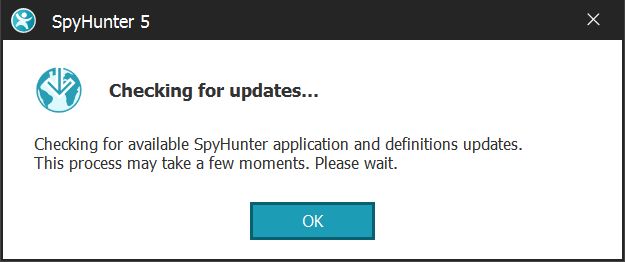
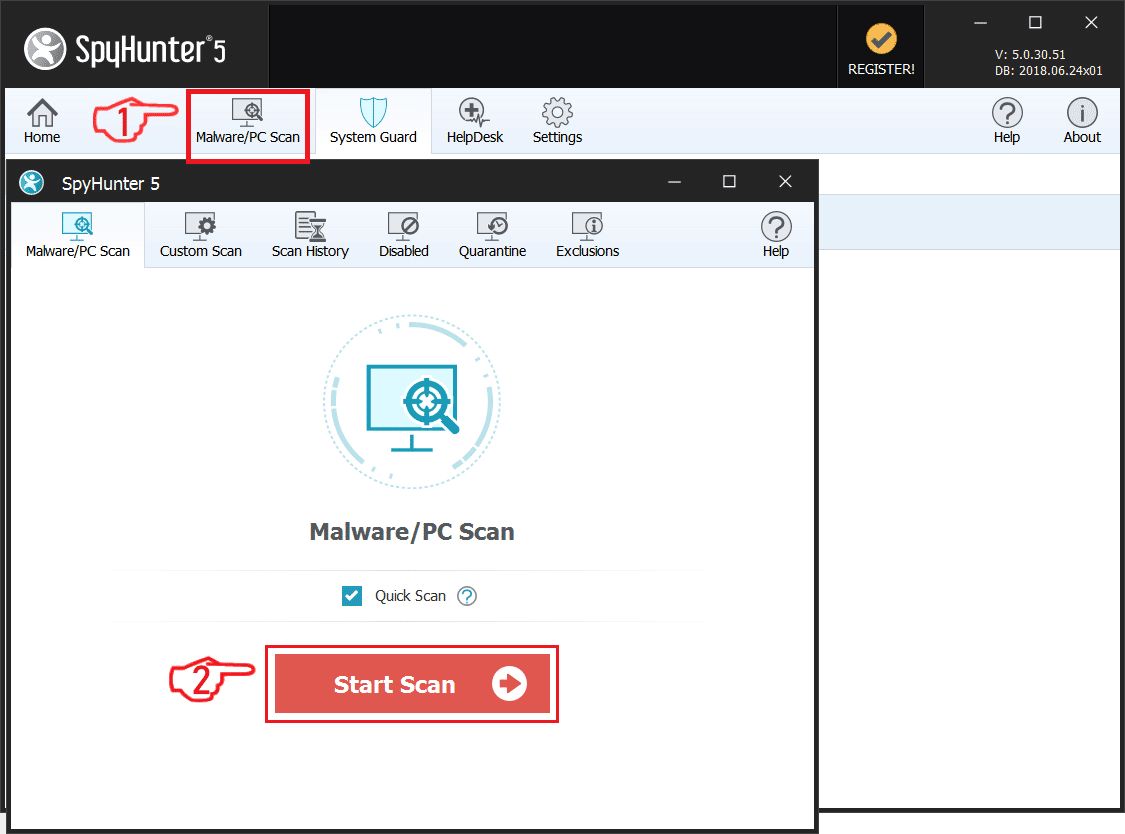
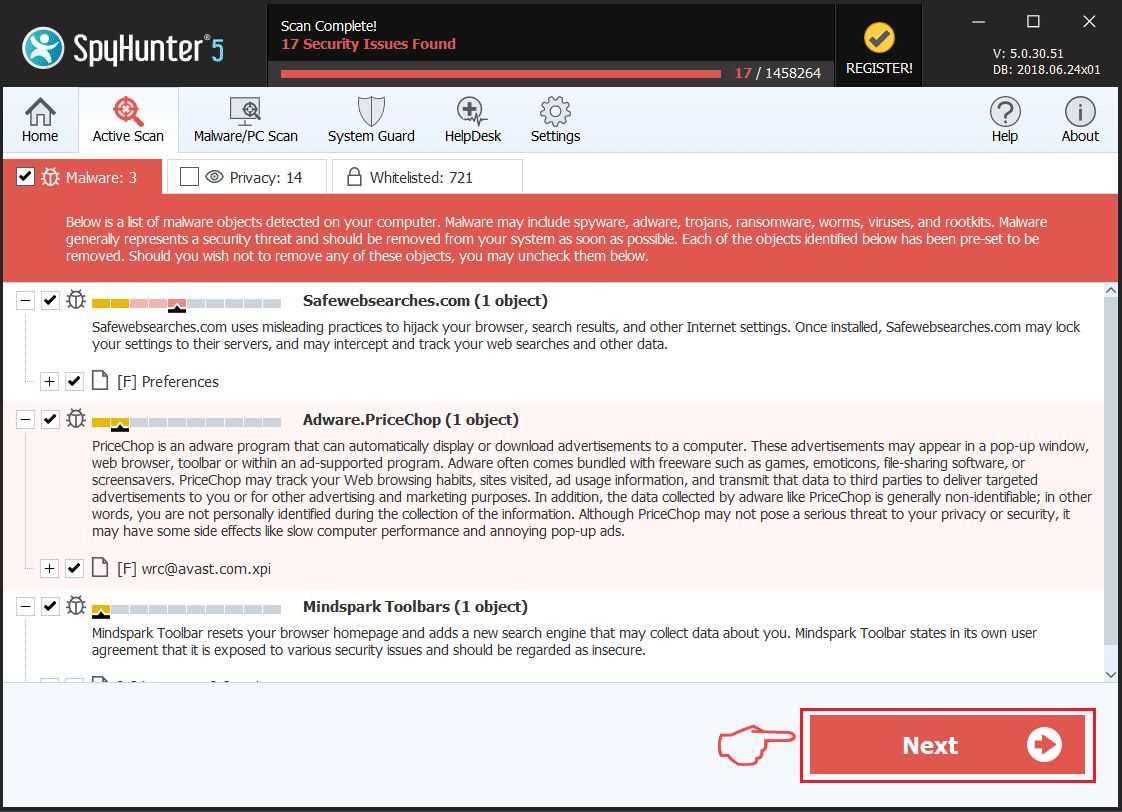
Ransomware Automatic Removal - Video Guide
Step 2: Uninstall DotZeroCMD and related malware from Windows
Here is a method in few easy steps that should be able to uninstall most programs. No matter if you are using Windows 10, 8, 7, Vista or XP, those steps will get the job done. Dragging the program or its folder to the recycle bin can be a very bad decision. If you do that, bits and pieces of the program are left behind, and that can lead to unstable work of your PC, errors with the file type associations and other unpleasant activities. The proper way to get a program off your computer is to Uninstall it. To do that:

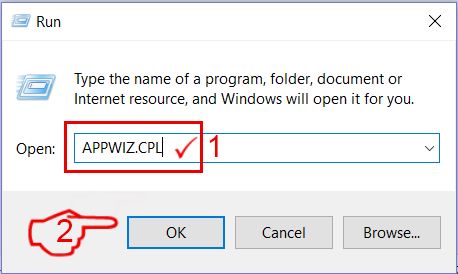
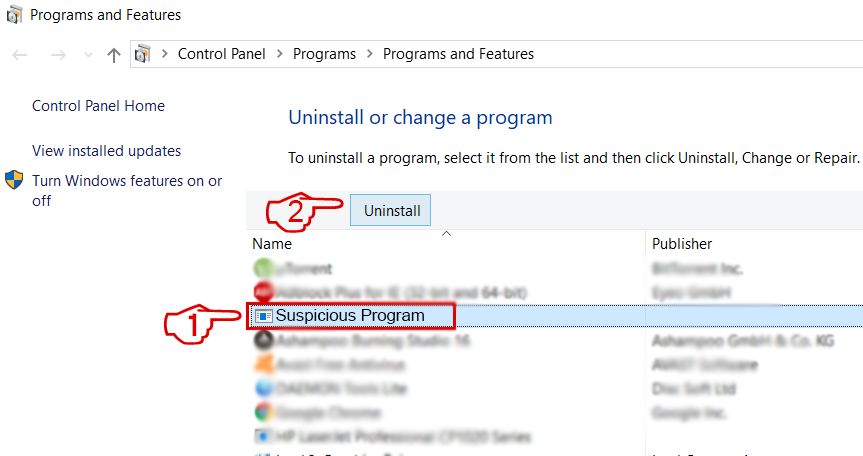 Follow the instructions above and you will successfully delete most unwanted and malicious programs.
Follow the instructions above and you will successfully delete most unwanted and malicious programs.
Step 3: Clean any registries, created by DotZeroCMD on your computer.
The usually targeted registries of Windows machines are the following:
- HKEY_LOCAL_MACHINE\Software\Microsoft\Windows\CurrentVersion\Run
- HKEY_CURRENT_USER\Software\Microsoft\Windows\CurrentVersion\Run
- HKEY_LOCAL_MACHINE\Software\Microsoft\Windows\CurrentVersion\RunOnce
- HKEY_CURRENT_USER\Software\Microsoft\Windows\CurrentVersion\RunOnce
You can access them by opening the Windows registry editor and deleting any values, created by DotZeroCMD there. This can happen by following the steps underneath:
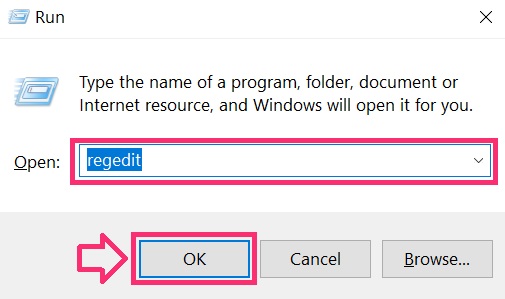

 Tip: To find a virus-created value, you can right-click on it and click "Modify" to see which file it is set to run. If this is the virus file location, remove the value.
Tip: To find a virus-created value, you can right-click on it and click "Modify" to see which file it is set to run. If this is the virus file location, remove the value.
Before starting "Step 4", please boot back into Normal mode, in case you are currently in Safe Mode.
This will enable you to install and use SpyHunter 5 successfully.
Step 4: Boot Your PC In Safe Mode to isolate and remove DotZeroCMD

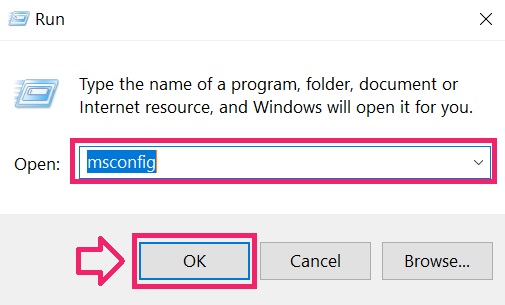
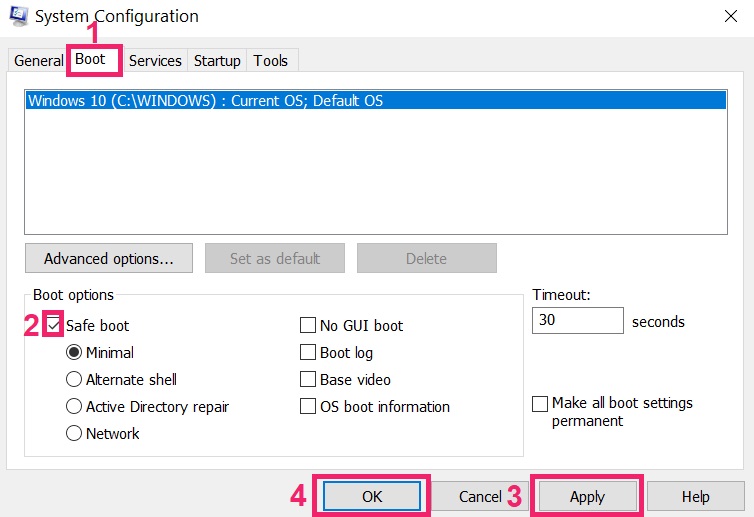
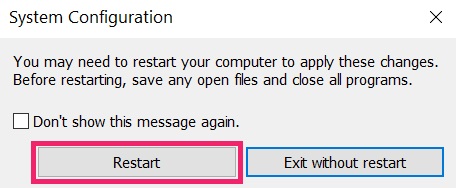
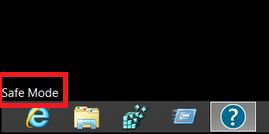
Step 5: Try to Restore Files Encrypted by DotZeroCMD.
Method 1: Use STOP Decrypter by Emsisoft.
Not all variants of this ransomware can be decrypted for free, but we have added the decryptor used by researchers that is often updated with the variants which become eventually decrypted. You can try and decrypt your files using the instructions below, but if they do not work, then unfortunately your variant of the ransomware virus is not decryptable.
Follow the instructions below to use the Emsisoft decrypter and decrypt your files for free. You can download the Emsisoft decryption tool linked here and then follow the steps provided below:
1 Right-click on the decrypter and click on Run as Administrator as shown below:
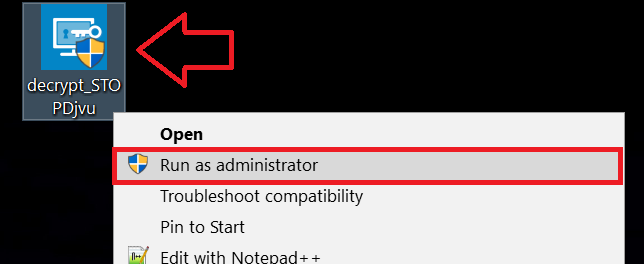
2. Agree with the license terms:
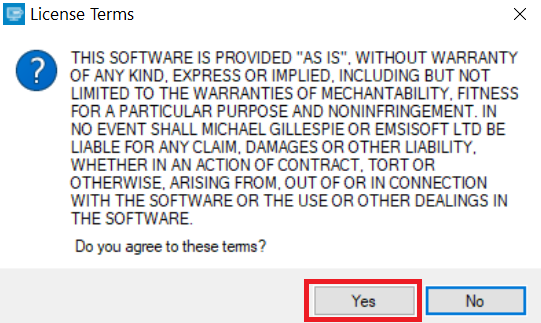
3. Click on "Add Folder" and then add the folders where you want files decrypted as shown underneath:
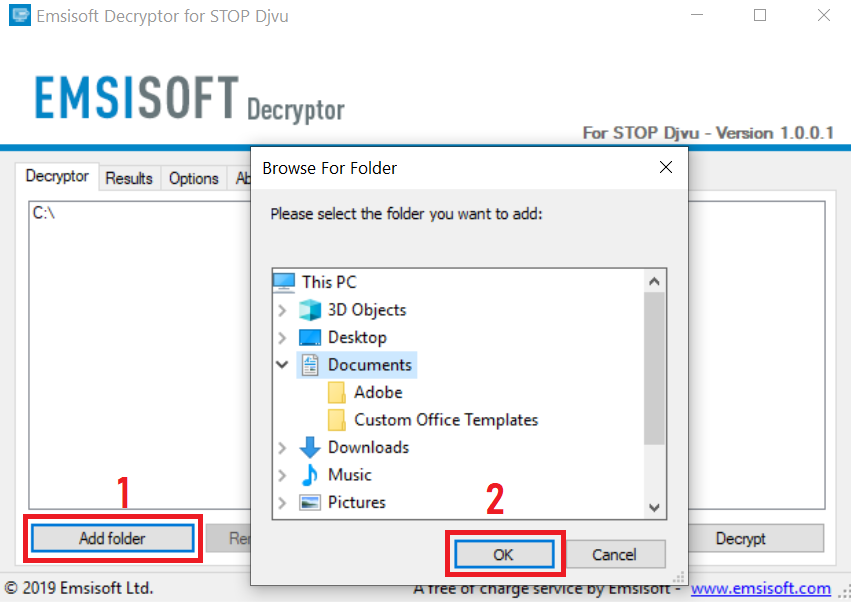
4. Click on "Decrypt" and wait for your files to be decoded.
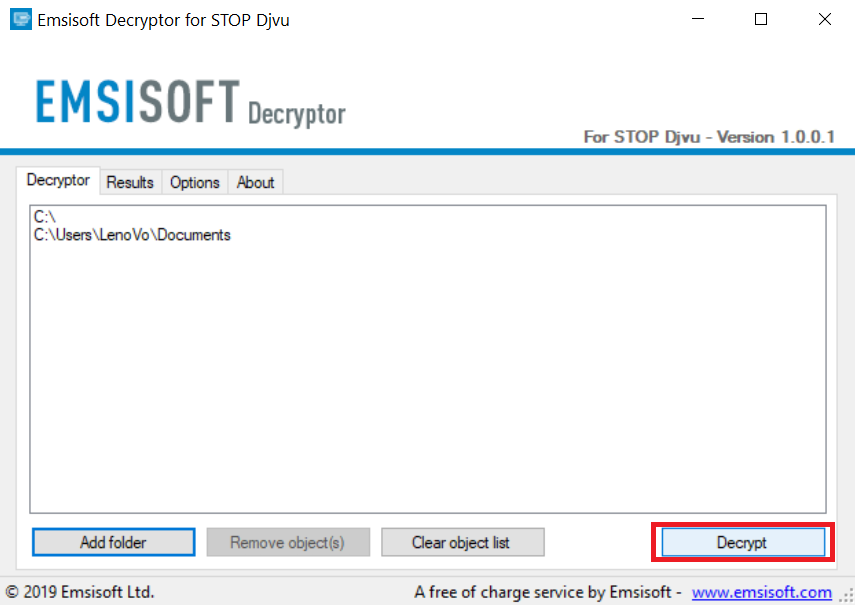
Note: Credit for the decryptor goes to Emsisoft researchers who have made the breakthrough with this virus.
Method 2: Use data recovery software
Ransomware infections and DotZeroCMD aim to encrypt your files using an encryption algorithm which may be very difficult to decrypt. This is why we have suggested a data recovery method that may help you go around direct decryption and try to restore your files. Bear in mind that this method may not be 100% effective but may also help you a little or a lot in different situations.
Simply click on the link and on the website menus on the top, choose Data Recovery - Data Recovery Wizard for Windows or Mac (depending on your OS), and then download and run the tool.
DotZeroCMD-FAQ
What is DotZeroCMD Ransomware?
DotZeroCMD is a ransomware infection - the malicious software that enters your computer silently and blocks either access to the computer itself or encrypt your files.
Many ransomware viruses use sophisticated encryption algorithms to make your files inaccessible. The goal of ransomware infections is to demand that you pay a ransom payment to get access to your files back.
What Does DotZeroCMD Ransomware Do?
Ransomware in general is a malicious software that is designed to block access to your computer or files until a ransom is paid.
Ransomware viruses can also damage your system, corrupt data and delete files, resulting in the permanent loss of important files.
How Does DotZeroCMD Infect?
Via several ways.DotZeroCMD Ransomware infects computers by being sent via phishing emails, containing virus attachment. This attachment is usually masked as an important document, like an invoice, bank document or even a plane ticket and it looks very convincing to users.
Another way you may become a victim of DotZeroCMD is if you download a fake installer, crack or patch from a low reputation website or if you click on a virus link. Many users report getting a ransomware infection by downloading torrents.
How to Open .DotZeroCMD files?
You can't without a decryptor. At this point, the .DotZeroCMD files are encrypted. You can only open them once they are decrypted using a specific decryption key for the particular algorithm.
What to Do If a Decryptor Does Not Work?
Do not panic, and backup the files. If a decryptor did not decrypt your .DotZeroCMD files successfully, then do not despair, because this virus is still new.
Can I Restore ".DotZeroCMD" Files?
Yes, sometimes files can be restored. We have suggested several file recovery methods that could work if you want to restore .DotZeroCMD files.
These methods are in no way 100% guaranteed that you will be able to get your files back. But if you have a backup, your chances of success are much greater.
How To Get Rid of DotZeroCMD Virus?
The safest way and the most efficient one for the removal of this ransomware infection is the use a professional anti-malware program.
It will scan for and locate DotZeroCMD ransomware and then remove it without causing any additional harm to your important .DotZeroCMD files.
Can I Report Ransomware to Authorities?
In case your computer got infected with a ransomware infection, you can report it to the local Police departments. It can help authorities worldwide track and determine the perpetrators behind the virus that has infected your computer.
Below, we have prepared a list with government websites, where you can file a report in case you are a victim of a cybercrime:
Cyber-security authorities, responsible for handling ransomware attack reports in different regions all over the world:
Germany - Offizielles Portal der deutschen Polizei
United States - IC3 Internet Crime Complaint Centre
United Kingdom - Action Fraud Police
France - Ministère de l'Intérieur
Italy - Polizia Di Stato
Spain - Policía Nacional
Netherlands - Politie
Poland - Policja
Portugal - Polícia Judiciária
Greece - Cyber Crime Unit (Hellenic Police)
India - Mumbai Police - CyberCrime Investigation Cell
Australia - Australian High Tech Crime Center
Reports may be responded to in different timeframes, depending on your local authorities.
Can You Stop Ransomware from Encrypting Your Files?
Yes, you can prevent ransomware. The best way to do this is to ensure your computer system is updated with the latest security patches, use a reputable anti-malware program and firewall, backup your important files frequently, and avoid clicking on malicious links or downloading unknown files.
Can DotZeroCMD Ransomware Steal Your Data?
Yes, in most cases ransomware will steal your information. It is a form of malware that steals data from a user's computer, encrypts it, and then demands a ransom in order to decrypt it.
In many cases, the malware authors or attackers will threaten to delete the data or publish it online unless the ransom is paid.
Can Ransomware Infect WiFi?
Yes, ransomware can infect WiFi networks, as malicious actors can use it to gain control of the network, steal confidential data, and lock out users. If a ransomware attack is successful, it could lead to a loss of service and/or data, and in some cases, financial losses.
Should I Pay Ransomware?
No, you should not pay ransomware extortionists. Paying them only encourages criminals and does not guarantee that the files or data will be restored. The better approach is to have a secure backup of important data and be vigilant about security in the first place.
What Happens If I Don't Pay Ransom?
If you don't pay the ransom, the hackers may still have access to your computer, data, or files and may continue to threaten to expose or delete them, or even use them to commit cybercrimes. In some cases, they may even continue to demand additional ransom payments.
Can a Ransomware Attack Be Detected?
Yes, ransomware can be detected. Anti-malware software and other advanced security tools can detect ransomware and alert the user when it is present on a machine.
It is important to stay up-to-date on the latest security measures and to keep security software updated to ensure ransomware can be detected and prevented.
Do Ransomware Criminals Get Caught?
Yes, ransomware criminals do get caught. Law enforcement agencies, such as the FBI, Interpol and others have been successful in tracking down and prosecuting ransomware criminals in the US and other countries. As ransomware threats continue to increase, so does the enforcement activity.
About the DotZeroCMD Research
The content we publish on SensorsTechForum.com, this DotZeroCMD how-to removal guide included, is the outcome of extensive research, hard work and our team’s devotion to help you remove the specific malware and restore your encrypted files.
How did we conduct the research on this ransomware?
Our research is based on an independent investigation. We are in contact with independent security researchers, and as such, we receive daily updates on the latest malware and ransomware definitions.
Furthermore, the research behind the DotZeroCMD ransomware threat is backed with VirusTotal and the NoMoreRansom project.
To better understand the ransomware threat, please refer to the following articles which provide knowledgeable details.
As a site that has been dedicated to providing free removal instructions for ransomware and malware since 2014, SensorsTechForum’s recommendation is to only pay attention to trustworthy sources.
How to recognize trustworthy sources:
- Always check "About Us" web page.
- Profile of the content creator.
- Make sure that real people are behind the site and not fake names and profiles.
- Verify Facebook, LinkedIn and Twitter personal profiles.

